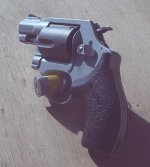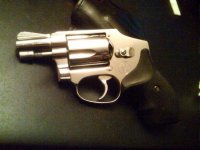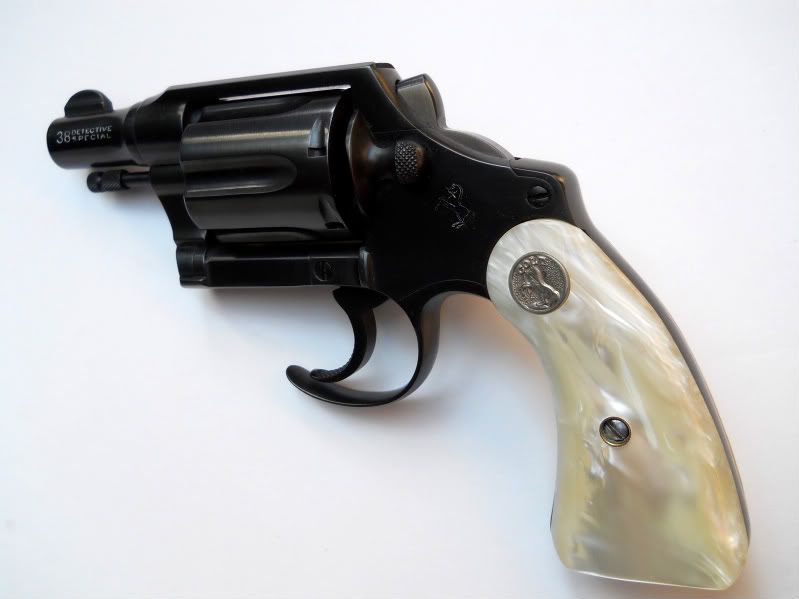So you are either walking around with a cocked revolver, or you are adding and second cocking action which takes more time, or you are just pulling the trigger. If you are using the latter then the trigger is different from that of a glock. Just forget it..you don't have a clue.
You are using an out of date browser. It may not display this or other websites correctly.
You should upgrade or use an alternative browser.
You should upgrade or use an alternative browser.
Good Pocket Snubbie
- Thread starter Steelers252006
- Start date
Dragline45
New member
I prefer all steel so for me you cant beat an older 640 in .38

For the past 3 weeks I have been pocket carrying this with a little twist. I hate IWB holsters and I hate the grips I am forced to use with the Barami hip grip or Desantis clip grip when going holsterless. So I had the idea to cut out the back pocket of an old pair of jeans and sew it inside my pants, and it worked out great.

For the past 3 weeks I have been pocket carrying this with a little twist. I hate IWB holsters and I hate the grips I am forced to use with the Barami hip grip or Desantis clip grip when going holsterless. So I had the idea to cut out the back pocket of an old pair of jeans and sew it inside my pants, and it worked out great.
Attachments
Last edited:
Gunn Smithy
New member
My carry gun for a number of years was a S&W model 649. I liked it better than the 640 type of snubbie as you still maintained the option to thumb cock the revolver or shoot double action yet the rounded hammer shroud kept any snags from happening. A little more heft in the all stainless version, but made for easier follow up shots. A little Mag-Na-Porting and you're in business. J frames are pretty hard to beat in a carry gun. Smithy.
Seeing those Detective Specials brings up a question I've wondered about for a long time: How do users avoid bending or damaging those ejector rods, hanging unsupported and unprotected like they do?
__________________
A good pocket holster.
Ralph G. Briscoe
New member
I've been collecting and carrying snubbies for several years. My arsenal includes Detective Specials, Cobra, Agent, LCR Smith models 10, 36, 442, 642, 49. I love them all but my usual choice for carry is the 642. I had a 340 and while they are a joy to carry, they're hell to shoot and have significant ammo restrictions.
Horse said:If you are used to glock triggers I suggest you pull the trigger on a snubbie a few times before buying. It's another world and a bit harder to master trigger control on a snubbie.
Out of the box triggers are usually heavy and stiff. I tell folks to dry fire with snap caps for about 200 times, then run at least 50 live rounds through the gun. That usually softens the springs and smooths out the initial trigger issues. If not, have a smith inspect the internals and eliminate any unnecessary friction points and any high spots on the frame. Clean the interior and relube with Dexron ATF and it'll feel lots smoother.
Seeing those Detective Specials brings up a question I've wondered about for a long time: How do users avoid bending or damaging those ejector rods, hanging unsupported and unprotected like they do?
I wondered about that too. So one day I called Colt and asked. They were nice enough to put an engineer on the phone (this was in the early 80's). According to Colt, the steel ejectors are made from a high grade steel rod. After machining, they're heat treated and tempered to withstand almost any abuse you can throw at it. In that respect, it's like the brake pedal on your car -- it's the strongest, most rigid piece of metal in the car by design. You'd have to slam that ejector rod down extremely hard to get it to bend much.
Last edited:





